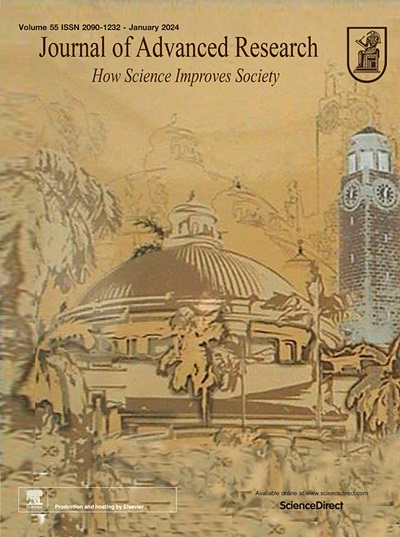Novel furfural-complexed approach to synthesizing carbon-Doped ZnO with breakthrough photocatalytic efficacy
IF 11.4
1区 综合性期刊
Q1 MULTIDISCIPLINARY SCIENCES
引用次数: 0
Abstract
Introduction
The efficiency of zinc oxide (ZnO) nanoparticles for environmental decontamination is limited by their reliance on ultraviolet (UV) light and rapid charge carrier recombination. Carbon doping has been proposed to address these challenges by potentially enhancing visible light absorption and charge separation.
Objectives
This study aims to introduce a novel, single-step synthesis method for carbon-doped ZnO (C-Z) nanoparticles, leveraging the decomposition of zinc nitrate hexahydrate and furfural under a nitrogen atmosphere to improve photocatalytic activity under visible light.
Methods
A series of C-Z variants (C-Z-1 to C-Z-5) and an undoped sample (ZnO-0) were synthesized. The influence of furfural on the synthesis process and doping mechanism was analyzed by X-ray photoelectron spectroscopy (XPS), X-ray diffraction (XRD), and UV–visible diffuse reflectance spectroscopy (DRS).
Results
XPS confirmed the integration of carbon within the ZnO matrix, and XRD indicated increased lattice dimensions owing to doping. DRS revealed bandgap narrowing, suggesting enhanced charge separation. Among the variants, C-Z-3 significantly outperformed the others, showing a 12-fold increase in the photocatalytic degradation rate of Rhodamine B compared to undoped ZnO.
Conclusion
The developed single-step synthesis method for C-Z nanoparticles represents a major advancement in materials engineering for ecological applications. The enhanced photocatalytic activity under visible light, as demonstrated by C-Z-3, underscores the potential of these nanoparticles for environmental decontamination.
用新型糠醛络合法合成具有突破性光催化功效的掺碳氧化锌。
简介:由于氧化锌(ZnO)纳米粒子依赖紫外线(UV)和快速的电荷载流子重组,其环境净化效率受到限制。碳掺杂可增强可见光吸收和电荷分离,从而应对这些挑战:本研究旨在介绍一种新颖的单步合成掺碳氧化锌(C-Z)纳米粒子的方法,利用六水硝酸锌和糠醛在氮气环境下的分解来提高可见光下的光催化活性:方法:合成了一系列 C-Z 变体(C-Z-1 至 C-Z-5)和未掺杂样品(ZnO-0)。通过 X 射线光电子能谱 (XPS)、X 射线衍射 (XRD) 和紫外可见光漫反射光谱 (DRS) 分析了糠醛对合成过程和掺杂机制的影响:结果:XPS 证实氧化锌基体中含有碳,XRD 表明由于掺杂,晶格尺寸增大。DRS 显示带隙变窄,表明电荷分离增强。与未掺杂的 ZnO 相比,C-Z-3 的光催化降解罗丹明 B 的速率提高了 12 倍:结论:所开发的 C-Z 纳米粒子一步合成法是生态应用材料工程学的一大进步。C-Z-3 在可见光下的光催化活性增强,凸显了这些纳米粒子在环境净化方面的潜力。
本文章由计算机程序翻译,如有差异,请以英文原文为准。
求助全文
约1分钟内获得全文
求助全文
来源期刊

Journal of Advanced Research
Multidisciplinary-Multidisciplinary
CiteScore
21.60
自引率
0.90%
发文量
280
审稿时长
12 weeks
期刊介绍:
Journal of Advanced Research (J. Adv. Res.) is an applied/natural sciences, peer-reviewed journal that focuses on interdisciplinary research. The journal aims to contribute to applied research and knowledge worldwide through the publication of original and high-quality research articles in the fields of Medicine, Pharmaceutical Sciences, Dentistry, Physical Therapy, Veterinary Medicine, and Basic and Biological Sciences.
The following abstracting and indexing services cover the Journal of Advanced Research: PubMed/Medline, Essential Science Indicators, Web of Science, Scopus, PubMed Central, PubMed, Science Citation Index Expanded, Directory of Open Access Journals (DOAJ), and INSPEC.
 求助内容:
求助内容: 应助结果提醒方式:
应助结果提醒方式:


